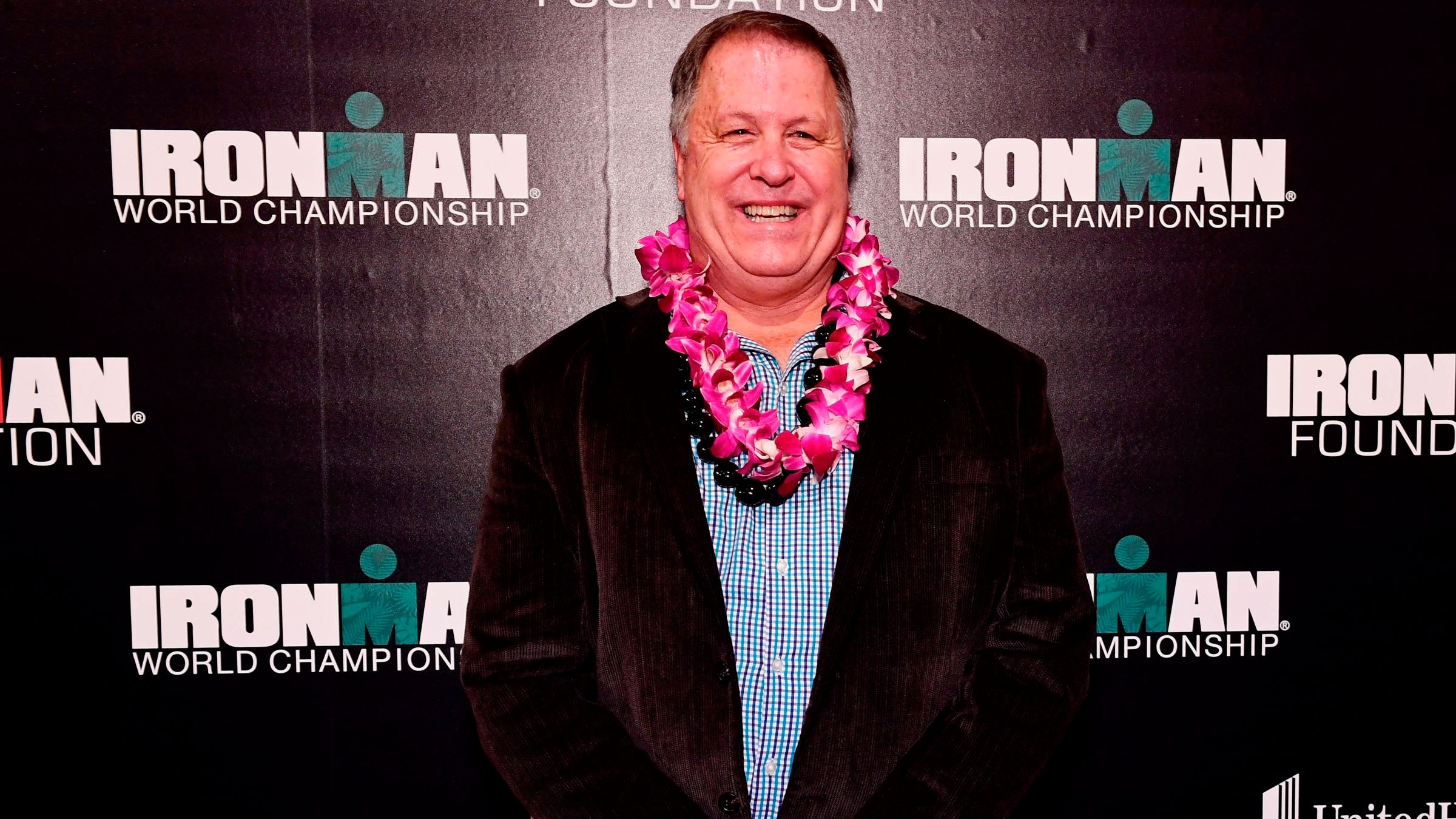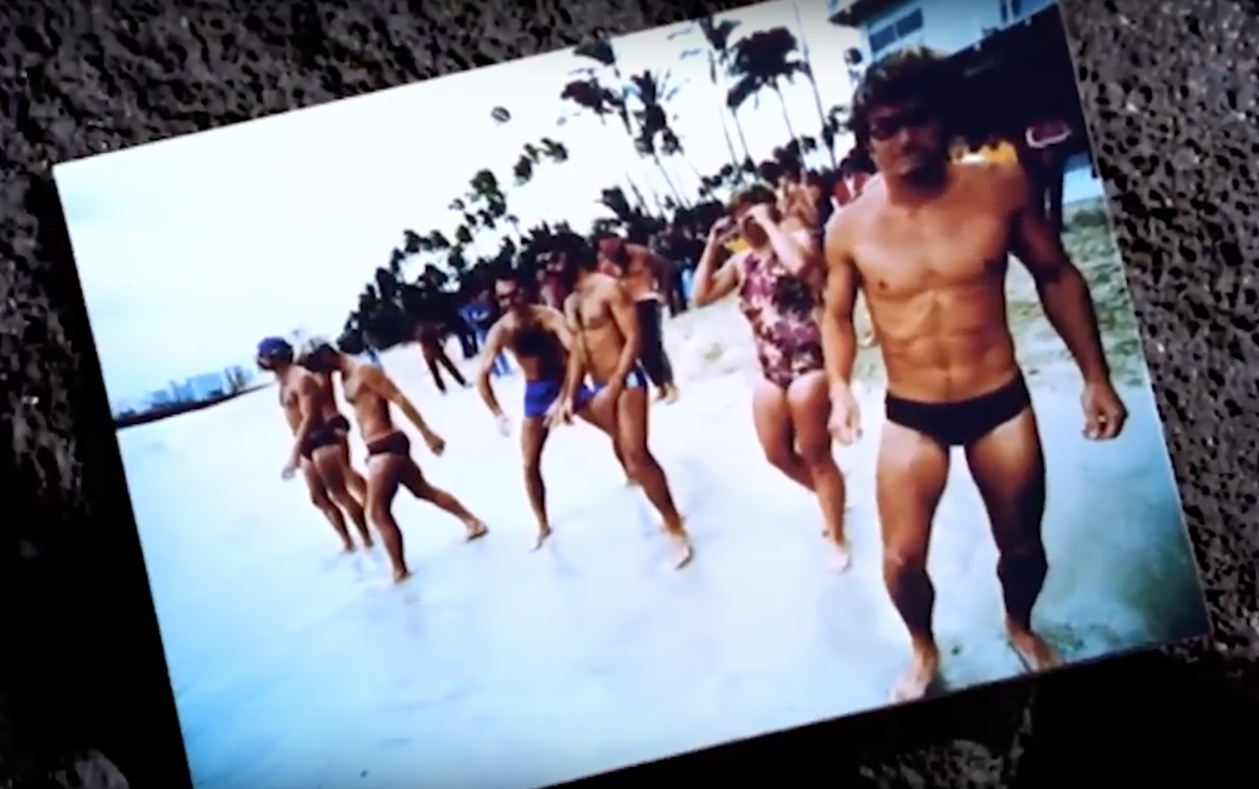Recalled: The 1978 Hawaii Ironman and Legend Dave Orlowski

Dave Orlowski at the Ironman World Championship Broadcast Premiere at New World Stages on December 5, 2017 in New York City. (Photo: Steven Ryan/Getty Images)
Known for his gregarious, generous spirit and boisterous laugh, Orlowski was a pioneer in the sport, finishing in third place in the very first Hawaiian Ironman event in 1978. Here is the story of that day.
Dave Orlowski wasn’t quite sure what he was getting into when he agreed to compete in a grueling new race in Waikiki, Hawaii in February, 1978. After all, he was a just a “young Marine getting free food and free beer” at a post-race party when Ironman founders John and Judy Collins tossed around an idea to pit the fittest athletes on the island against each other by combining the Waikiki Rough Water Swim, the Around Oahu Bike Race, and the Honolulu Marathon. AKA the Hawaiian Ironman Triathlon.
Orlowski was mildly interested. He fit the bill somewhat; after all, he was a fit 22-year-old who grew up swimming and had become a good runner in the Marines, recently finishing the Honolulu marathon. A running buddy ponied up the five dollar entry free, and Orlowski didn’t put too much thought into the race. But he was game for getting it done. At the time, naysayers expressed doubt that the human body could withstand such a grueling event. Orlowski and 14 other men lined up on the shores of Oahu on Feb. 18, 1978 to prove them wrong. “We went out as individuals to see what we could do,” he said.

The thing is, Orlowski could swim well (he finished the 1978 swim leg in 1 hour, nine minutes), but he wasn’t much of a cyclist. Or even a cyclist at all. In fact, he borrowed a Sears Free Spirit bike just a week before the race and took it out for all of 30 miles prior to race day. He also famously cut off a pair of jeans the night before the race to wear over his striped Speedo during his ride so he could stash cash in the pockets to buy food and drinks during his ride. Which he did. “My bike time was 6 hours and 59 minutes, but that’s with some stops at a grocery store and a McDonalds,” he said. “I sat down and had a whole meal.”
Despite his detours (and some extreme chafing from the jorts, which he eventually swapped for running shorts), Orlowski got off the bike in sixth place. And while the marathon was much more familiar territory for him, he’d never actually run off the bike. “I couldn’t walk, my legs kept buckling and I’d fall over,” recalled Orlowski of the bike-t0-run transition. “But where I finished didn’t matter to me. It wasn’t a race, it was just about finishing the thing.”
He almost didn’t finish. Some 17 miles in to the run, Orlowski hit the proverbial wall. He slowed to a walk, then a crawl, clutching to a guard rail alongside the road. As he struggled to move forward around mile 22, a van rolled up next to him and the door opened. Orlowski looked up, and saw his parents inside.
“They had flown to Hawaii to surprise me,” he remembered. “They had just gotten off the airplane and found me at just the right time. They gave me a hug and a kiss and told me they loved me, and that gave me the boost I needed to get to the finish line.”
Orlowski wound up passing two more men after that point, climbing his way onto the podium behind winner Gordon Haller and runner-up John Dunbar in a time of 13:59:13. The finish line offered little fanfare, just a yellow line painted on the ground and Judy Collins and her daughter keeping time on a stopwatch.
“Gordon might’ve won, but on all of our trophies it just said ‘finisher’” Orlowski joked about the handmade hardware (John Collins himself had soldered an “ironman” figure out copper, which he’d attached to a block of wood).
After the Ironman and his stint in Hawaii, Orlowski eventually made his way to Milwaukee, started a family, and got a job as a police detective. The triathlon life was all but a distant memory until 2003 when he was invited back to the Ironman event to celebrate the 25th anniversary, bringing his mother along. Overweight and recovering from a shoulder replacement, Orlowski was far from race shape, but being in the scene once more made him determined to be a part of it once more. He got a bike, got back into running, and lost 53 pounds. He set a goal to race every Ironman around the world and began racing with ferocity, racking up five or six triathlons per year.
By 2019, Orlowski had completed 29 Iron-distance events, including some while he was battling leukemia. That year, he traveled to Kona one last time as a spectator and part of the Suunto Elite Team. Speaking to the press, he rehashed that fateful, transformative February day, and grew emotional as he expressed just how much of a profound personal impact the sport continued to have more than 40 years later.
“It does so much for people, and it’s done so much for me in building my life,” Orlowski said of triathlon, fighting back tears. “When you cross that finish line…it changes your life.”